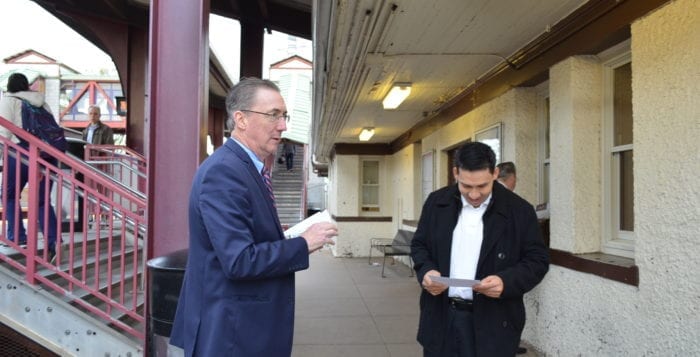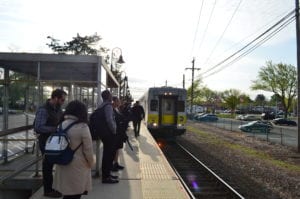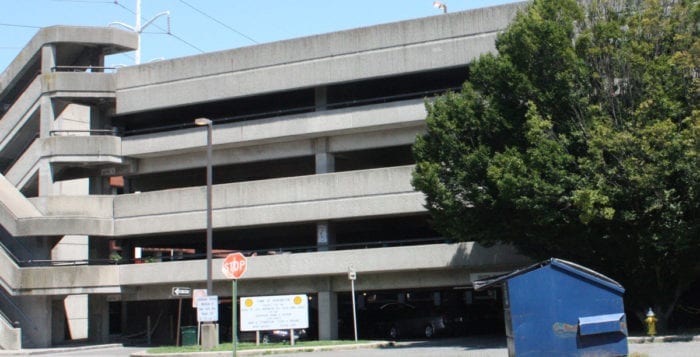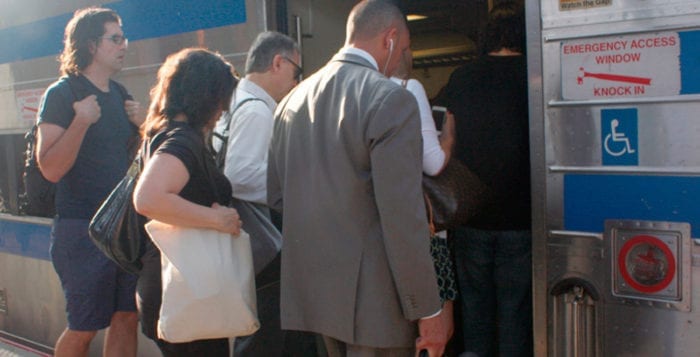Supervisor Chad Lupinacci (R) has announced the launch of the Passport Parking app, which has made paying for metered parking more convenient since its deployment at the Huntington LIRR station on Oct. 17. It is already being used by parking patrons in Huntington village, even before deployment of signage for a full launch has been completed.
“We did a quiet launch to work out any issues with the deployment before promoting it to the public and it appears that the app has been very well-received — it’s very easy to use,” said Lupinacci. “We’re already seeing people use the app in Huntington village, where our team is completing signage installation but the app is already active.”
The Passport Parking app is an alternative to paying at the meter for metered parking on Railroad Street, Broadway and in Municipal Lot 15, where the Huntington LIRR station house is located. Passport Parking signage now appears near the on-street spots and in the parking lot at the Huntington LIRR station displaying zone numbers.
Lupinacci added: “The app is more convenient when it’s raining and for commuters trying to catch a train. You never need to use a parking meter again.”
Passport Parking is active for all metered parking at the Huntington LIRR station and in Huntington village. The Town expects to complete the installation of Passport Parking Zone decals on parking meters and on the numbered poles marking metered parking spaces in Huntington village this week. Zones are broken down by street. The zone decals on the numbered poles in the village will be visible from the street as the driver pulls into the space, enabling payment from a cellphone inside the vehicle. Stand-alone zone signs will also be installed in the various zones in the village after the decal placement is completed.
In the meantime, anyone can view the Passport Parking Zone numbers, assigned by street, on the Town website to pay for parking with the app now: www.huntingtonny.gov/parking-app.
“Complaints related to parking meters at the train station have dropped to zero since the roll-out of the app,” said Peter Sammis, director of public safety, which oversees the parking meter team.
During a five-person Request for Proposal evaluation performed by the Town’s Department of Public Safety, Passport Parking had a significant existing install base, providing the best quality of service, cost, uptime, data integrity and an outstanding merchant validation process described as “best in class.” The app serves as a convenient, user-friendly alternative to the parking meters, which will remain in use.
Parking patrons can download the Passport Parking app, found on the App Store or the Google Play Store, then enter the corresponding zone number, the parking space number, the length of stay (with the ability to add time later via the app) and payment info to complete the transaction.
It should be noted that parking in metered spots remains free for vehicles displaying valid disability parking permits and license plates.
More on the Passport Parking App: www.huntingtonny.gov/parking-app.









